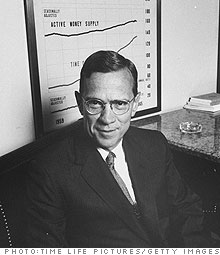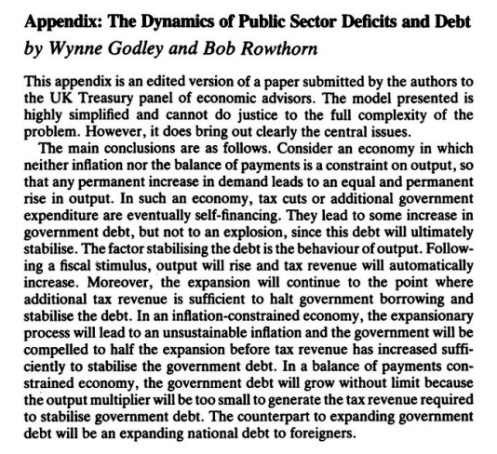"I agree with [Silvio] Gesell that the result of [our] filling in the gaps in the classical theory [with our approaches] is not to dispose of the [free-market] ‘Manchester System’,"
" but to indicate the nature of the environment which the free play of economic forces requires if it is to realise the full potentialities of production. The central controls necessary to ensure full employment will, of course, involve a large extension of the traditional functions of government…. "
"But there will still remain a wide field for the exercise of private initiative and responsibility. Within this field the traditional advantages of individualism will still hold good."
"Let us stop for a moment to remind ourselves what these advantages are."
" They are partly advantages of efficiency
— the advantages of decentralisation and of the play of self-interest."
" The advantage to efficiency of the decentralisation of decisions and of individual responsibility is even greater, perhaps, than the nineteenth century supposed; and the reaction against the appeal to self-interest may have gone too far. "
"But, above all,"
here it comes sports fans
" if it can be purged of its defects and its abuses,"
the good old angelization assumption
" individualism is the best safeguard of personal liberty in the sense that, compared with any other system, it greatly widens the field for the exercise of personal choice"
"It is also the best safeguard of the variety of life, which emerges precisely from this extended field of personal choice,"
the loss of personal choice is the greatest of all the losses of the homogeneous or totalitarian state."
" For this variety preserves the traditions which embody the most secure and successful choices of former generations; it colours the present with the diversification of its fancy; and, being the handmaid of experiment as well as of tradition and of fancy, it is the most powerful instrument to better the future…."
personal choice "the hand maiden of experiment "!!!!!
-------------------
back to reality
"[I]f… demand is deficient, not only is the public scandal of wasted resources intolerable, but the individual enterpriser who seeks to bring these resources into action is operating with the odds loaded against him. "
"The game of hazard which he plays is furnished with many zeros, so that the players as a whole will lose if they have the energy and hope to deal all the cards."
" Hitherto the increment of the world’s wealth has fallen short of the aggregate of positive individual savings; and the difference has been made up by the losses of those whose courage and initiative have not been supplemented by exceptional skill or unusual good fortune."
" But if effective demand is adequate, average skill and average good fortune will be enough."
--------------------------------
back to liberal dog barking
"The authoritarian state systems ...solve the problem of unemployment at the expense of efficiency and of freedom. "
-----------------------------
punch drunk sum up:
\
"It is certain"
" the world will not much longer tolerate the unemployment…."
" But it may be possible by a right analysis of the problem to cure the disease whilst preserving efficiency and freedom…"
the ghost of future '78
rises to laff












 :
:



